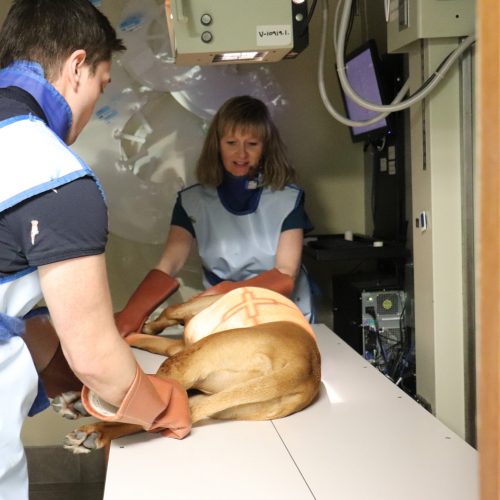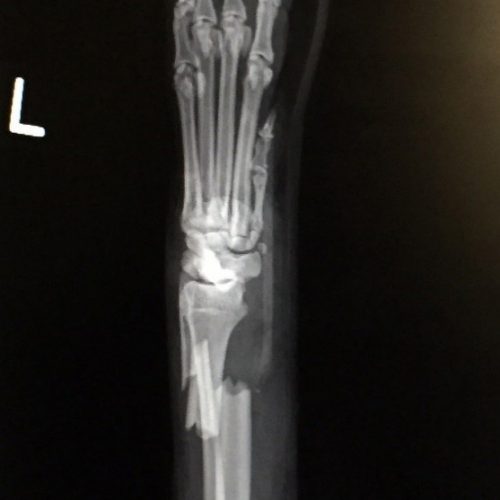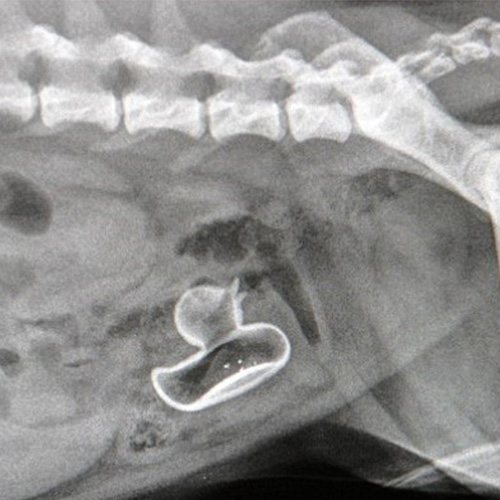When we need to figure out what’s wrong with your pet, we routinely use radiographs, commonly known as X-rays, to help identify the cause and rule out possible problems. We may also use radiographs during a wellness exam to diagnose potential problems before they become serious. They provide valuable information about a pets bones, gastrointestinal tract, respiratory tract, heart, and urinary system. Often times we use radiology alone or in conjunction with other diagnostic tools such as bloodwork or ultrasound. Interpretation of radiographs requires skill and experience on the part of the veterinarian and if the study is difficult to interpret or required to make an important decision, we can send the images to a board certified radiologist for further assessment.
We use digital radiology. This technology allows us to provide you with a quicker diagnosis for your pet since images are immediately transferred to a computer rather than film. It uses less radiation than traditional X-rays and images can be modified to allow for more accurate interpretation.
In some cases, we may need to sedate your pet using short-acting anesthesia. This is necessary in some cases to avoid a blurry image, as pets need to remain completely still while an X-ray is taken. Some areas of the body need X-rays taken from obscure angles or in a setting where millimeters matter for a diagnosis, which also warrant a safe and short sedation protocol.
Radiographs are important in diagnosing a variety of conditions but they do have their limitations. We do not have an MRI or a CT scanner at our clinics, but for cases that do need that level of imaging, we often refer to VSCAN, located at the Ottawa Animal Emergency & Specialty Hospital. This is needed for many neurology, oncology, and orthopedic conditions.






